50 years of Pride: How New York's LGBTQ movement flourished against all the odds
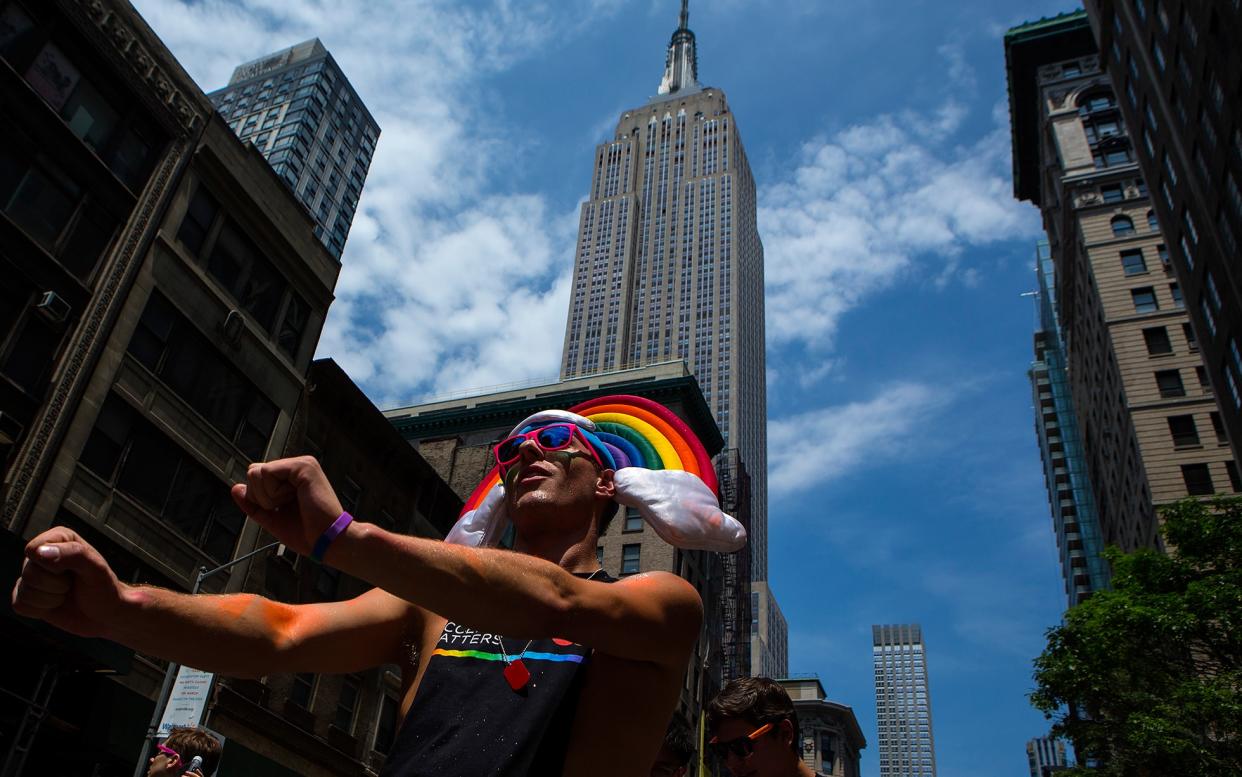
There were the usual parties around the West Village last New Year’s Eve, but only one had Madonna performing Like a Prayer.
The singer’s surprise show in the 150-capacity red-draped room upstairs at the Stonewall Inn was apposite: “I stand here proudly at the place where Pride began,” she announced, wearing a bejewelled leather biker’s jacket. “We come together tonight to celebrate 50 years of revolution.”
The revolution began with six nights of riots in the summer of 1969, sparked by a brutal police raid on that bar. It was boiling point for an already aggressed local community.
According to David Carter’s book Stonewall – widely seen as the definitive account of the riots – the mafia-run Inn made far more money from blackmailing closeted customers than from selling watered-down gin and tonic.
Five decades of political struggle (and revelry) later, WorldPride 2019 is a month-long festival commemorating the pugnacious birth of LGBTQ rights in America, with rooftop parties, culinary fundraisers, screenings and cosplay evenings, culminating in the main event on June 30, when an estimated five million people will join or watch the march from Madison Square Park to Christopher Street.
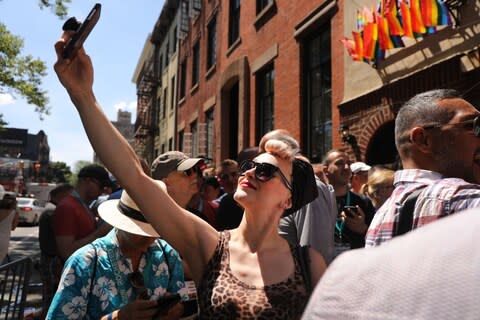
As night falls, the art-deco peak of the Empire State Building will blaze with rainbow colours, parties will continue into Monday and all things disco and glitter will abound.
From my experience of past events, I know that remnants of the glitter will serve as a reminder of the weekend for days. We’ve come a long way since 1969, when even the liberal Village Voice banned the word “gay” from its pages.
While the leafy, narrow streets of the West Village are ill-equipped for the parade, it is its spiritual home. Christopher Street riots aside, it saw some of the most interesting episodes and characters in LGBTQ history. It’s also – thanks to the award of landmark status in the year of the riots – well preserved, superficially at least.
Its cobbles and brownstones radiate charm, but socio-economics have warped things. A place once inhabited by bohemians has long been colonised by newcomers with $300-a-month Equinox gym memberships.
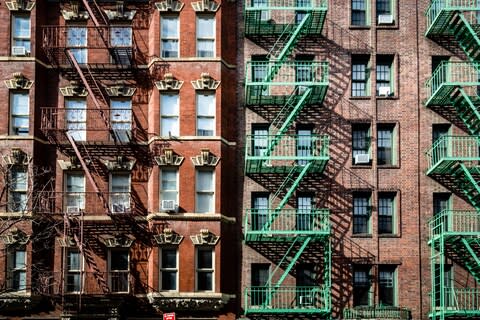
In 2015, St Vincent’s Hospital – which gave bisexual poet Edna St Vincent Millay her middle name after her uncle was treated there, and which was known for its free treatment for the poor and, in particular, of Aids patients at the worst of the epidemic – was demolished for luxury apartments, which cost $19,000 (£15,050) a month.
Yet the streets retain a spectral, romantic feel, and hide treasure. The Center – a hub for LGBTQ community events, health programmes and support – houses some of the best art in Manhattan: of the building’s murals, a ground-floor piece by pop artist Kenny Scharf is particularly notable, as is Once Upon a Time, a sexually explicit 1989 Keith Haring work in the old white-tiled lavatories upstairs. Haring’s paintings go for more than $5 million. Given its resonance and location, this piece feels more special than anything money could buy.
The architectural preservation of the Village makes it easy to squint and conjure up images of fearless lesbian, gay and trans street kids – almost none white, all penniless – hurling rubbish bins at the police 50 years ago.
No matter your orientation, the urban history is incredible. Opposite the site of St Vincent’s stands the origami-like Aids memorial with a text installation by Jenny Holzer featuring Walt Whitman’s Song of Myself in a spiral: “I celebrate myself, and sing myself. And what I assume you shall assume. For every atom belonging to me as good belongs to you.”

“Five thousand gay men died in this neighbourhood from Aids,” says Tom Bernardin, a tour guide on Ellis Island and one of the most senior regulars at Julius’, easily the most atmospheric dive bar – gay or straight – in the city.
With its long, weathered wooden bar and perennial midnight ambience, it is an Edward Hopper painting brought to life. All the bar scenes in last year’s award-winning film Can You Ever Forgive Me? were shot here; its $6 burgers are better and cheaper than those often deemed the “best in New York” at the Corner Bistro six blocks away – and its jukebox is brilliant.
“In the Seventies, all the Protestant gays came here after church for a white wine spritzer,” says Tom. “In the Eighties a lot of places closed, but today it’s really busy again, with a more diverse crowd.” The other regulars call him Lamppost Tom after he raised $6,000 to replace the street light outside with an original, ornate, bishop’s crook lamppost. The bar’s owner, Helen Buford, calls him their unofficial historian.
The day after talking to Tom, I meet Professor Andrew Lear, who runs the Oscar Wilde Tour company, outside the Stonewall for a guided walk. A man approaches, unlocks the door and heads inside. Prof Lear gestures to the legend on the back of his jacket – “Veteran of 1969”. “That’s Tree Sequoia,” he says. “He’s been working here since before the riots. Probably not his real name though.”
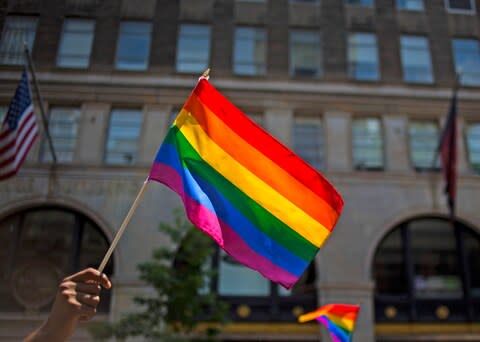
Prof Lear, who is working on a gay history TV show with Stephen Fry, spends two hours talking about an area that was a 17th-century rural idyll for settlers and became a bohemian hub in the late 19th century. We pass Julius’, where he talks about the “Sip-In” by the Mattachine Society in April 1966.
Members of the gay rights group announced their sexual orientation to the barman and demanded a drink, knowing that a homophobic law meant the bar could be prosecuted for serving them. The barman refused. It was an early salvo in the war for LGBTQ rights.

We reach Washington Square – today a glorious open space, but once a place of execution. Prof Lear points out the former homes of E E Cummings and Eleanor Roosevelt, whose homoerotic correspondence with female friends suggests much, and the high-rise that housed art collector Sam Wagstaff’s penthouse, where his partner Robert Mapplethorpe shot much of his most explicit imagery. “And Hopper had his studio here,” says Prof Lear, gesturing across the street. I wonder to myself if Hopper ever frequented Julius’.
Many old haunts of celebrated bohemians have been repurposed. Jack Kerouac – whose relationship with the poet Allen Ginsberg blurred friendship and romance – lived for a period in the Marlton Hotel, when it was down-at-heel. Today it’s the nicest place to stay in the West Village, all wood panelling, antique-style sofas and margaux – the kind of restaurant where fashion industry types eat fancy kale salads with grated parsnip.
West 8th Street, which it sits on, has a lot going for it: Stumptown Coffee, Goods for the Study (my favourite stationery store in the city) and Existing Conditions, one of the most interesting cocktail bars anywhere: their Banana Justino is magnificence.
Visiting a lesbian or gay bar may seem intimidating to a straight visitor, but if you respect the purpose of these spaces, you’ll be given similar respect. A friend who is a regular at Stonewall calls it “the straightest gay bar in the world”. For obvious reasons, it is a tourist attraction as much as an LGBTQ resource.
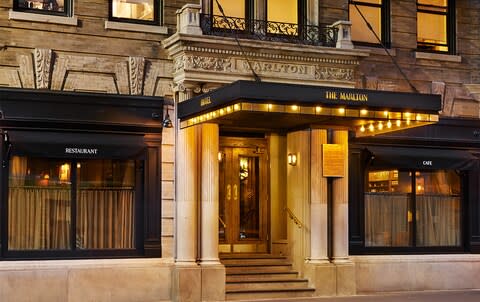
Other places blur the line between gay and straight – notably The Duplex Cabaret Theatre, with its daily music, comedy and drag shows, and Marie’s Crisis, the most famous piano bar in the city.
Given that many people in the Village live in tiny studio apartments, piano bars have long been extensions of their living rooms, places to flirt and sing show tunes. On a Saturday, Marie’s is resounding with Sondheim, heaving with everyone from Broadway pros to tourists from Nebraska. It’s a lot of fun, living history.
As Tom said to me: “I love this place. I want to feel what people felt here before me. I want to breathe the same air as Tennessee Williams, Truman Capote and Rudolf Nureyev. It’s special.”
Getting there
The writer flew with British Airways – 21 flights per day to New York from London from £277 (ba.com).
Visiting there
The Center (gaycenter.org) The Duplex (the duplex.com) Julius’ (juliusbarnyc.com) Marie’s Crisis (mariescrisis.us) The Stonewall Inn (thestonewallinnnyc.com)
Touring there
Oscar Wilde Tours, $30pp (oscarwildetours.com)
Staying there
The Marlton Hotel (001 212 321 0100; marltonhotel.com) has rooms from $255 per night, including breakfast. For a full review and to book, visit telegraph.co.uk/tt-marlton
More information
For full details of WorldPride 2019 events visit 2019-worldpride-stonewall50.nycpride.org
Inspiration for your inbox
Sign up to Telegraph Travel's new weekly newsletter for the latest features, advice, competitions, exclusive deals and comment.

